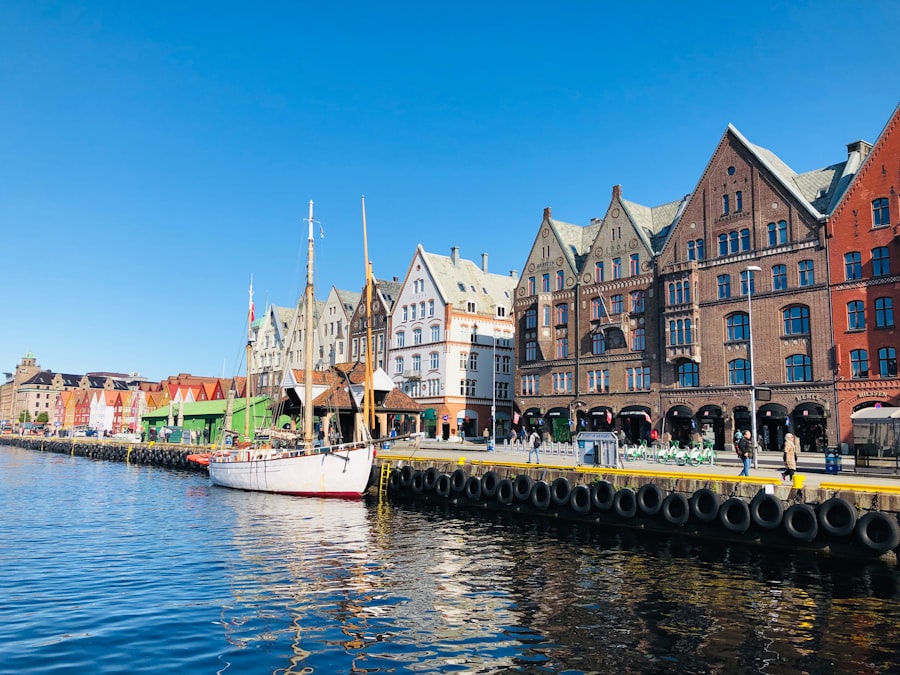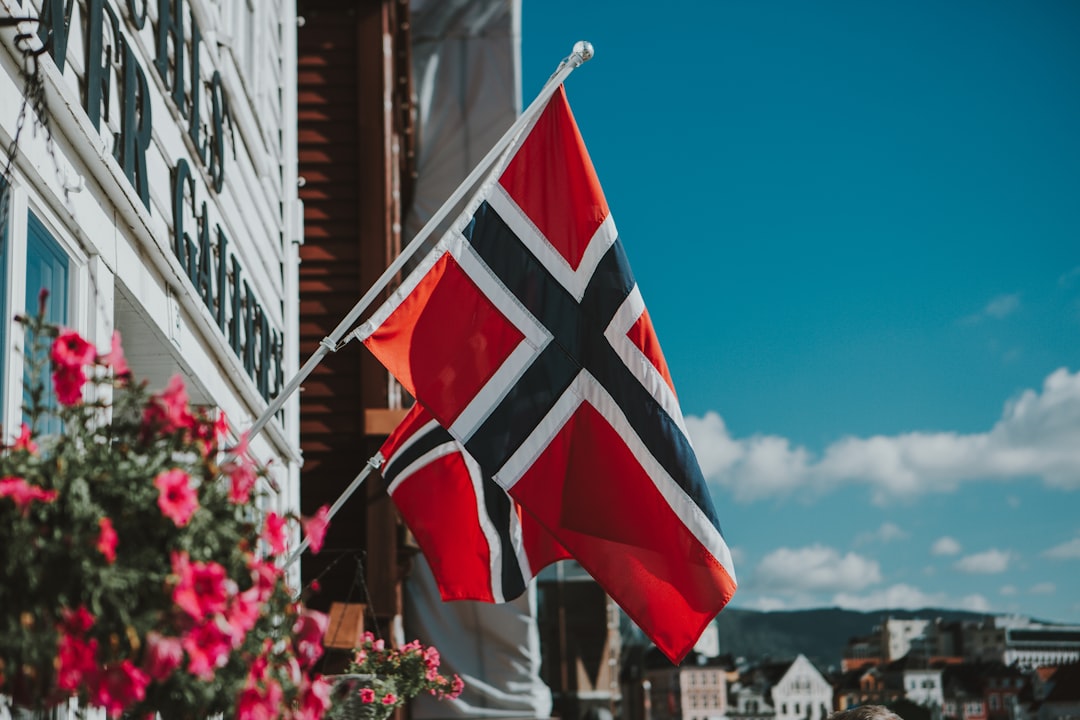Fårikål, often hailed as Norway’s national dish, is a culinary delight that embodies the essence of Norwegian culture and tradition. This hearty stew, primarily made from lamb and cabbage, is not just a meal; it is a celebration of the country’s agricultural heritage and a symbol of the changing seasons. As the leaves turn golden and the air becomes crisp, Fårikål emerges as a staple on dining tables across Norway, bringing families and friends together in a warm embrace of flavour and nostalgia.
The dish is so beloved that it has earned its own day of celebration, with the last Thursday in September designated as “Fårikål Day,” where Norwegians indulge in this comforting fare. The simplicity of Fårikål belies its rich history and cultural significance. It is a dish that has been passed down through generations, each family adding their own unique touch while adhering to the traditional methods of preparation.
The combination of tender lamb, layered with cabbage and seasoned with whole black peppercorns, creates a dish that is both satisfying and deeply rooted in the Norwegian way of life. As we delve deeper into the origins, ingredients, and cultural importance of Fårikål, we will uncover why this dish holds a special place in the hearts of Norwegians and how it continues to be a cherished part of their culinary landscape. Your journey to a smooth relocation starts here. Talk one-on-one with a Norway Relocation specialist and turn your plan into a reality.
Summary
- Fårikål is Norway’s national dish, a traditional autumn feast that brings people together.
- The dish has a long history and is deeply rooted in Norwegian culture, with connections to folklore and mythology.
- Fårikål is made with simple ingredients such as lamb, cabbage, and peppercorns, cooked in a pot for hours to create a rich and comforting stew.
- In Norway, Fårikål is a symbol of the harvest season and is often enjoyed during autumn feasts and celebrations.
- Modern interpretations and variations of Fårikål continue to evolve, but the dish remains a beloved tradition that unites people in the spirit of autumn.
The History and Origins of Fårikål
The origins of Fårikål can be traced back to the 18th century, making it one of Norway’s oldest traditional dishes. Historical records suggest that it was first mentioned in a cookbook published in 1866, but its roots likely extend even further into Norway’s agrarian past. The dish was born out of necessity, utilising readily available ingredients that were abundant in the Norwegian landscape.
Lamb, a staple in Norwegian farming, was often paired with cabbage, which could be stored for long periods during the harsh winters. This practical approach to cooking reflects the resourcefulness of Norwegian households, who relied on seasonal produce to sustain them through the colder months. As Norway transitioned through various historical phases, including periods of hardship and prosperity, Fårikål remained a constant presence at the dining table.
It became a symbol of comfort during difficult times and a celebratory dish during harvest festivals. The dish’s enduring popularity can be attributed to its simplicity and the communal experience it fosters. Families would gather around the table to share stories and laughter while enjoying this hearty stew, reinforcing bonds and creating lasting memories.
Today, Fårikål is not only a culinary staple but also a testament to Norway’s rich history and cultural identity.
Ingredients and Cooking Methods for Fårikål

The beauty of Fårikål lies in its straightforward ingredients and uncomplicated cooking method. At its core, the dish consists of just three primary components: lamb, cabbage, and whole black peppercorns. The lamb used is typically from young sheep, known as “får,” which lends the dish its name.
The meat is cut into generous chunks, allowing for a rich flavour to develop during the cooking process. Cabbage, often savoy or green cabbage, is layered with the meat in a large pot, creating a harmonious balance between the two ingredients. To prepare Fårikål, one begins by layering the lamb and cabbage in a large pot, seasoning each layer with salt and peppercorns.
Water is then added to cover the ingredients before the pot is brought to a gentle simmer. The key to achieving the perfect Fårikål lies in slow cooking; allowing the stew to simmer for several hours ensures that the flavours meld beautifully while the meat becomes tender and succulent. Traditionally, Fårikål is served with boiled potatoes on the side, which soak up the delicious broth and enhance the overall dining experience.
This method of preparation not only highlights the natural flavours of the ingredients but also reflects the Norwegian philosophy of cooking with simplicity and respect for nature.
Fårikål as a Symbol of Autumn Feasts in Norway
As autumn descends upon Norway, Fårikål takes centre stage in seasonal feasts and gatherings. The arrival of cooler weather signals the start of harvest celebrations, where communities come together to honour the bounty of nature. Fårikål is often featured prominently during these festivities, serving as a reminder of the importance of seasonal eating and the connection between food and nature.
The dish embodies the spirit of autumn, with its warm flavours and comforting aroma evoking feelings of nostalgia and togetherness. In many households, preparing Fårikål becomes a cherished ritual as families gather to cook and share stories about their own traditions surrounding the dish. The act of making Fårikål is often accompanied by laughter and camaraderie, reinforcing familial bonds while celebrating the changing seasons.
As Norwegians indulge in this hearty stew during autumn feasts, they not only savour its deliciousness but also honour their cultural heritage and the agricultural practices that have sustained them for generations.
The Cultural Significance of Fårikål in Norwegian Cuisine
Fårikål holds a significant place within Norwegian cuisine, representing more than just a meal; it embodies cultural identity and national pride. As Norway’s national dish, it serves as a culinary ambassador for the country, showcasing traditional cooking methods that have stood the test of time. The dish reflects Norway’s agricultural roots and highlights the importance of local produce in shaping its culinary landscape.
By embracing seasonal ingredients like lamb and cabbage, Fårikål exemplifies Norway’s commitment to sustainability and respect for nature. Moreover, Fårikål acts as a unifying force within Norwegian society. It transcends regional differences, as variations may exist across different parts of the country; however, the core essence remains unchanged.
Whether enjoyed in urban Oslo or rural Finnmark, Fårikål brings people together around shared values of community and tradition. It serves as a reminder that food has the power to connect individuals across generations while fostering a sense of belonging within one’s cultural heritage.
Fårikål Traditions and Customs

The traditions surrounding Fårikål are deeply ingrained in Norwegian culture, with various customs associated with its preparation and consumption. One notable tradition is the gathering of family members to partake in making this beloved dish during autumn months. This communal cooking experience often involves sharing stories about family history or recounting memories associated with past meals enjoyed together.
Such gatherings reinforce familial ties while passing down culinary knowledge from one generation to another. Another custom linked to Fårikål is its association with specific celebrations throughout autumn. For instance, many Norwegians enjoy this dish during “Fårikål Day,” which falls on the last Thursday in September each year.
On this day, families across Norway come together to prepare and savour Fårikål as a way to honour their culinary heritage. Restaurants also participate by featuring special menus dedicated to this iconic dish, further solidifying its status as an integral part of Norwegian culture.
Fårikål and the Celebration of Harvest in Norway
Fårikål is intrinsically tied to Norway’s harvest celebrations, marking an important time when communities come together to acknowledge nature’s bounty. As farmers gather their crops and prepare for winter months ahead, Fårikål serves as a fitting tribute to this season of abundance. The dish encapsulates the essence of autumn harvests by utilising locally sourced ingredients that reflect what is available at this time of year.
During harvest festivals across Norway, Fårikål often takes centre stage alongside other traditional dishes that celebrate local produce. These events provide an opportunity for communities to come together in appreciation of their agricultural heritage while enjoying hearty meals that nourish both body and spirit. By incorporating Fårikål into these celebrations, Norwegians honour their connection to land while fostering a sense of unity among neighbours.
Fårikål and its Connection to Norwegian Folklore and Mythology
Fårikål also finds its place within Norwegian folklore and mythology, where food often plays a significant role in storytelling traditions. In ancient times, meals were not merely sustenance; they were imbued with symbolism and meaning that reflected cultural beliefs about nature and community life. The act of sharing food like Fårikål was seen as an offering to spirits or deities who governed agricultural cycles.
In some tales, it is said that preparing Fårikål during specific lunar phases could influence crop yields or ensure bountiful harvests for future seasons. Such beliefs highlight how deeply intertwined food practices are with spiritual beliefs within Norwegian culture. By continuing these traditions today through dishes like Fårikål, Norwegians maintain a connection not only to their culinary heritage but also to their rich tapestry of folklore that has shaped their identity over centuries.
Fårikål Festivals and Events in Norway
Throughout Norway, various festivals celebrate Fårikål as part of broader culinary events dedicated to traditional foods. These festivals often feature cooking competitions where chefs showcase their unique interpretations while adhering closely to traditional methods. Visitors can sample different variations while learning about regional differences in preparation techniques or ingredient choices.
One notable event is held annually in Oslo during “Fårikål Week,” where restaurants across the city offer special menus highlighting this iconic dish alongside other traditional fare from Norway’s culinary repertoire. Such events not only promote local cuisine but also foster appreciation for cultural heritage among both locals and tourists alike.
Modern Interpretations and Variations of Fårikål
While traditional Fårikål remains beloved by many Norwegians today, modern interpretations have emerged that reflect evolving tastes and culinary trends. Chefs are experimenting with new flavour profiles by incorporating additional spices or herbs into their recipes while still honouring core elements like lamb and cabbage. Some contemporary variations may include adding root vegetables such as carrots or parsnips for added sweetness or experimenting with different cuts of meat beyond lamb—such as beef or even vegetarian alternatives—allowing more people access to this cherished dish regardless of dietary preferences.
Fårikål: A Dish to Bring People Together in Autumn
Ultimately, Fårikål serves as more than just sustenance; it embodies community spirit during autumn months when families gather around tables filled with warmth and laughter over shared meals steeped in tradition. Its rich flavours evoke memories tied closely to family gatherings while fostering connections between generations through storytelling around food. As Norwegians continue celebrating their culinary heritage through dishes like Fårikål each year during harvest season—whether at home or at festivals—they reinforce bonds within communities while honouring their agricultural roots that have shaped their identity over centuries past.
In conclusion, whether you are new to Norway or have lived here for years, embracing traditions like those surrounding Fårikål can deepen your connection with this beautiful country’s culture—making it an ideal time for those considering relocation through services such as Norway Relocation Group who can assist you every step along your journey! Additionally, if you wish to immerse yourself further into Norwegian culture while learning the language necessary for meaningful interactions—consider enrolling in courses at NLS Norwegian Language School located right in Oslo!
Register for a Norwegian class at the NLS Norwegian Language School now!

